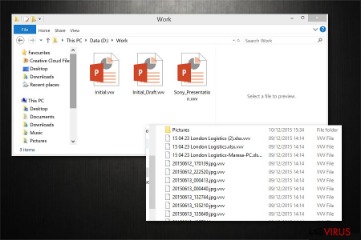
Negative goodwill commonly refers to a bargain purchase and is generally favorable to the acquiring company. Reporting requirements of negative goodwill vary according to the generally accepted accounting principles (GAAP). The concept of negative goodwill is the opposite of goodwill, where companies pay a higher premium than the fair value of the assets. Accounting standard requires companies to quantify the value of intangible assets like the company’s reputation, customer base, licenses, and patents. In contrast, negative goodwill, the value of intangible assets, record as a gain on the buyer’s side.
- However, this approach means that the value factor captures not only the assets-in-place but also the profitability of these assets.
- Under the UK GAAP, goodwill has a finite useful life and should therefore be amortised.
- Finally, the net fair asset value of the firm would be the sum of those three components.
- This usually happens because of an external economic event or a change in the competitive landscape.
- Say you acquired Company X for $16B, and it has the following asset and liability values.
- Because goodwill is made up of components with subjective values, there’s always a risk that the purchasing company will overvalue goodwill.
Goodwill sums up all elements besides book value that cause investors to be interested in purchasing a company. The company recorded a Gain on Acquisition of $48 million on its Income Statement, reversed it on the Cash Flow Statement, and reversed the taxes on this Gain as well. The blog has been created by Steve Cooper, a retired member of the International Accounting Standards Board, and Dennis Jullens, a former analyst who now teaches at VU University in Amsterdam. We were colleagues for many years at UBS Investment Research and have a shared interest in accounting standard setting, investor education and equity analysis. Scientific Beta makes one additional adjustment which is to remove recognised goodwill. However, the value characteristic can itself be thought of in two ways, either a measure of the extent of ‘assets-in-place’ or a measure of cheapness.
Example B – Stock Acquisition
The direct costs to sell would be $9,300 and the unit’s value in use is $340,000. Negative goodwill can also pose some challenges for the buyer, such as attracting scrutiny from regulators, auditors, and investors. Negative goodwill can raise questions about the quality and reliability of the buyer’s financial statements, as it may indicate that the buyer has overestimated the fair value of the net assets acquired or underestimated the purchase price. Negative goodwill can also trigger tax implications, as it may reduce the buyer’s taxable income and deferred tax assets.
Waverly may possess a top credit rating with its creditors, an excellent reputation for quality products and service, a highly competent management team, or highly skilled employees. These factors will positively affect the total future earning power and hence the value of the business entity. [IAS 22.55] If the amortisation period exceeds 20 years, recoverable amount must be calculated annually, even if there is no indication that it is impaired.
Positive UBS Results Lay Foundations for Credit Suisse Integration – Fitch Ratings
Positive UBS Results Lay Foundations for Credit Suisse Integration.
Posted: Fri, 01 Sep 2023 15:57:00 GMT [source]
When negative goodwill exists, a bargain purchase has been made that favors the buyer. This situation typically arises when there is a distressed sale, such as when a business is in bankruptcy, and the seller has no other option. However, after the value of PPE and intangibles becomes zero, it gets recognized as an extraordinary gain in the income statement.
Understanding Negative Goodwill
Instead, it’s the business’s responsibility to monitor the value of goodwill and apply impairment when necessary. Both the US Generally Accepted Accounting Principles (US GAAP) and International Financial Reporting Standards (IFRS) require that companies test their goodwill at least once a year and after a possible triggering event. However, each set of standards provides different instructions for impairment testing. Say you acquired Company X for $16B, and it has the following asset and liability values.
Goodwill represents the price of the company to be purchased minus the fair value of that company that we found. As long as the purchase price of the company is less than its market value, we will have found the amount of NGW. When a company buys another company, it doesn’t just acquire the assets; it also acquires other intangible factors & assets, which results in the acquiree company paying a higher than market value for the entire firm. It generally indicates that the seller was forced to sell assets due to bankruptcy or serious financial distress. When companies go through financial hardships, their only option often remains to sell their assets for a fraction of their market values. It can be thought of as extra income for the buying company in the period it bought the other firm.
According to US GAAP and IFRS, both goodwill and negative goodwill must be recognized and accounted for in the acquiring company’s financial statements. In the event of a bargain purchase, the purchaser is required under GAAP to recognize a gain for financial accounting purposes. The first step in purchase price allocation, or PPA, is to determine the purchase price. Also known as the transaction price/value, this is the price paid for the equity of a company and is calculated as shown to the right. Scientific Beta differentiates between two broad categories of intangibles which it calls knowledge capital and organisational capital. Knowledge capital is derived from the capitalisation of the research and development expense and organisational capital is derived from the capitalisation of other operating expenses that are deemed to contribute to other intangible assets.
Part 1: Why Bargain Purchases?
This content is for general information purposes only, and should not be used as a substitute for consultation with professional advisors. Notes payable and long-term debt are valued at their net present value of the future cash payments discounted at the current market rate of interest for similar securities. Recognise any excess of the carrying value of goodwill immediately in profit and loss as an impairment loss.
- Since goodwill is not a separately identifiable asset, it is allocated to reporting (ASPE) or cash generating units (CGUs; IFRS) expected to benefit from the business acquisition on the acquisition date.
- Negative goodwill (NGW), also known as the bargain purchase amount, arises whenever the amount of money paid by a company to purchase another company or its assets is less than their fair market values.
- If the carrying value of the net asset value subsequently falls below its FMV, the acquirer records a one-time loss equal to the difference.
- Sometimes, one company is willing to pay a premium to acquire another, and that premium is referred to as goodwill.
- The value remaining after such allocation actively transfers to the profit and loss account as an extraordinary gain.
- Basically, it means that the value of the asset has dropped below the amount that you paid for it.
This is because the recession directly impacts their existing business, and most will have limited flexibility to avoid a significant fall in profitability and value; so-called ‘irreversibility of assets in place’. Different explanations are offered accounting for carbon offsets as to why value stocks have tended to perform better than growth stocks. Others offer a more rational explanation based on the assertion that value stocks display higher risk and that this risk factor is compensated through a higher expected return.
Amendments under consideration by the IASB
Consideration can be cash or other assets, notes payable, shares, or other equity instruments. Firms must amortize the value of the asset over this estimated life span. Firms must periodically test the value of intangible assets that are amortized for impairment following a procedure similar to that used for goodwill. The test compares the “carrying value” (i.e., value as shown on the firm’s financial statements) to the fair value of the intangible asset and requires recognition of an impairment loss whenever the carrying value exceeds the fair value. Goodwill is the difference between the purchase price less the fair market value of the target’s net asset value. Positive goodwill is recorded as an asset, whereas negative goodwill (i.e., a bargain purchase) is shown as a gain on the acquirer’s consolidated income statement.

When an acquisition creates a goodwill asset, the acquirer has paid more than the fair value of the acquiree’s assets. When there is negative goodwill, the acquirer has paid less than the fair value of the acquiree’s assets. Current US GAAP requires the amount of negative goodwill after acquisition to be written off against the allocation assets that the company just acquired.
Zero coupon convertibles do not have a zero cost
A seller sometimes sells his business at a lower than its original price due to many circumstances; this leads to the creation of negative goodwill in the books of accounts of the seller. Usually, goodwill is an asset and part of the balance sheet’s asset section. In the case of negative goodwill, it is treated as a liability and actively reduces the value of assets transferred. From the seller’s perspective, negative goodwill can be actively presented in the balance sheet as a negative amount on the asset side.
Valuation of assets, especially long-term fixed assets, may be incorrect – given that macroeconomic factors are constantly changing – and result in inaccurate market values. Similarly, an inaccurate valuation of intangible assets may also result in lower market values and negative goodwill. As a fictitious example of negative goodwill, let’s assume Company ABC buys the assets of Company XYZ for $40 million, but those assets are actually worth $70 million. This deal only occurs because XYZ is in dire need of cash, and ABC is the only entity willing to pay that amount. In this case, ABC must record the $30 million difference between the purchase price and the fair market as negative goodwill on its income statement. Goodwill is an indefinite-lived intangible asset recorded on the acquirer’s post-combination balance sheet that is not amortized but, rather, tested periodically for impairment.
6 Goodwill, bargain purchase gains, and consideration transferred
Negative goodwill occurs when the purchase price paid for an asset is lower than its value in the market. In contrast, goodwill occurs when the purchase price is higher than its market value – i.e., the goodwill amount is the premium paid by the buyer for the intangible value of the company’s assets. For example, STOXX and MSCI use an approach that equally weights book to price, earnings to price and cash flow to price.